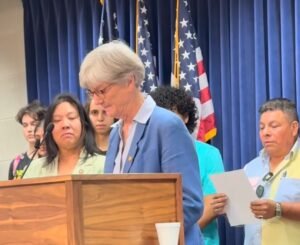DURHAM, NC – Five public parks in Durham remain closed indefinitely as officials investigate lead contamination, sparking frustration among community members who want faster action from the city.
The closures, which are expected to last at least through the end of the year, come after research by Duke University revealed high levels of lead and pollution in several parks, particularly in East Durham, Lyon Park, and Walltown.
On Monday night, officials from the North Carolina Department of Environmental Quality (NCDEQ) and Durham Parks and Recreation presented the latest test results and outlined next steps in a public meeting at the Walltown Recreation Center.
Community Calls for Urgent Cleanup
Residents at the meeting expressed frustration over the delays in addressing the contamination, demanding that city officials move faster to make the parks safe again.
“It’s unacceptable that our communities and children have been exposed to toxins on city-owned land,” said one resident. “We need action, not just studies.”
Durham Parks and Recreation Director Wade Walcutt acknowledged the urgency but said further testing is required before remediation efforts can begin.
“We are committed to finding the best solution,” Walcutt said. “Once we have all the data, we will work with the community to determine how to restore these parks.”
Next Steps in Testing and Cleanup
NCDEQ is continuing environmental testing in the affected parks, with results expected to guide cleanup decisions later this year. Walcutt estimated that by the end of 2025, the city would have a remediation plan ready for public review.
As for the cost of cleanup, the city has already allocated $5 million in last year’s budget, but officials anticipate needing an additional $7 million to complete the process.
Why Was the Contamination Just Discovered?
Some residents at the meeting questioned why the city had not identified these risks earlier—particularly since the issue was first flagged by Duke University researchers.
“Why did it take an outside study to uncover this? Shouldn’t the city have known?” asked a community member.
Walcutt acknowledged the concern but emphasized that Durham acted quickly once the data was presented.
“I can’t speak for the city’s history, but we appreciate Duke’s research for bringing this to our attention,” Walcutt said. “Since then, we’ve moved as fast as possible, analyzing the data and making informed decisions.”
Looking Ahead
As officials work through testing and remediation options, Durham residents will have opportunities to weigh in on how the parks should be restored.
For updates on the cleanup process, public meetings, and other community news, subscribe to the Bull City Citizen—your trusted source for local reporting.
Stay informed. Stay connected. Read more at www.BullCityCitizen.com.













